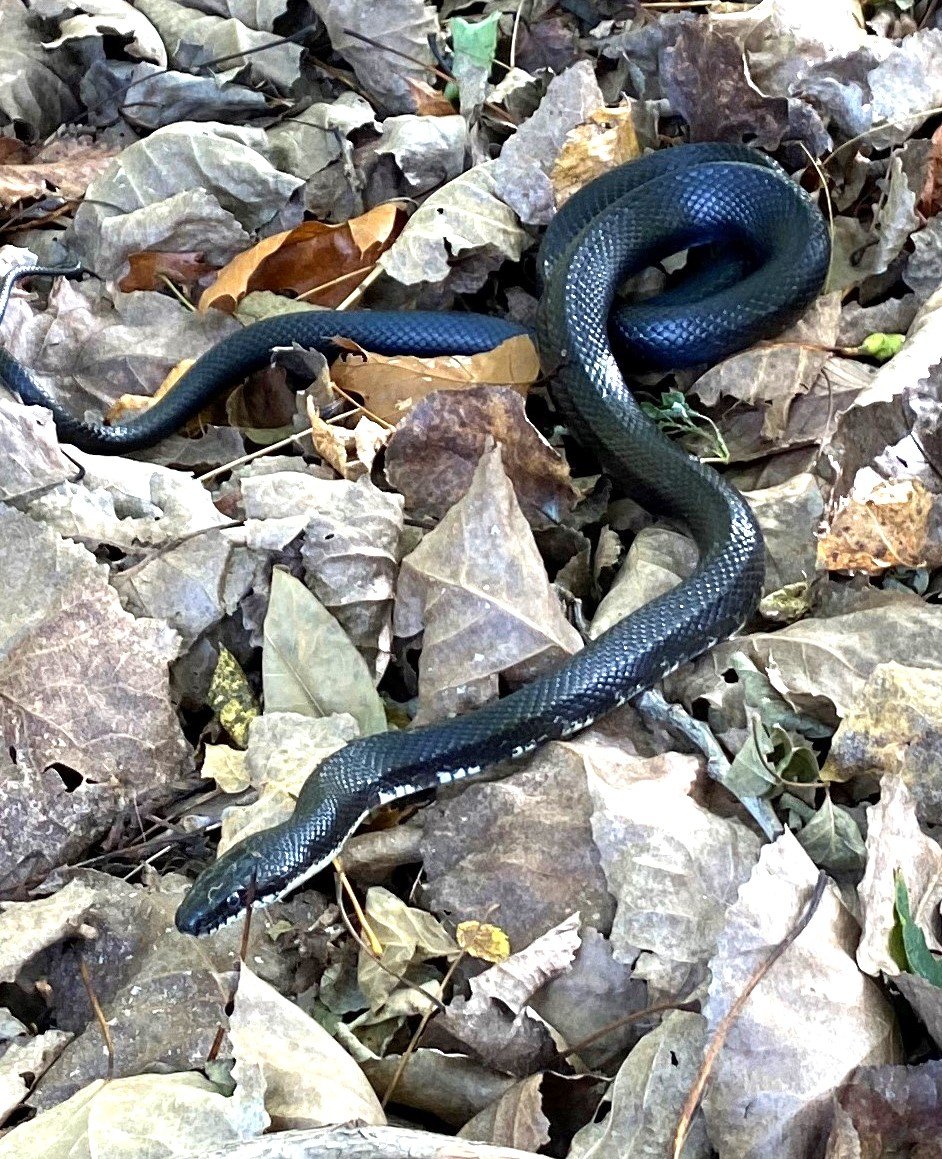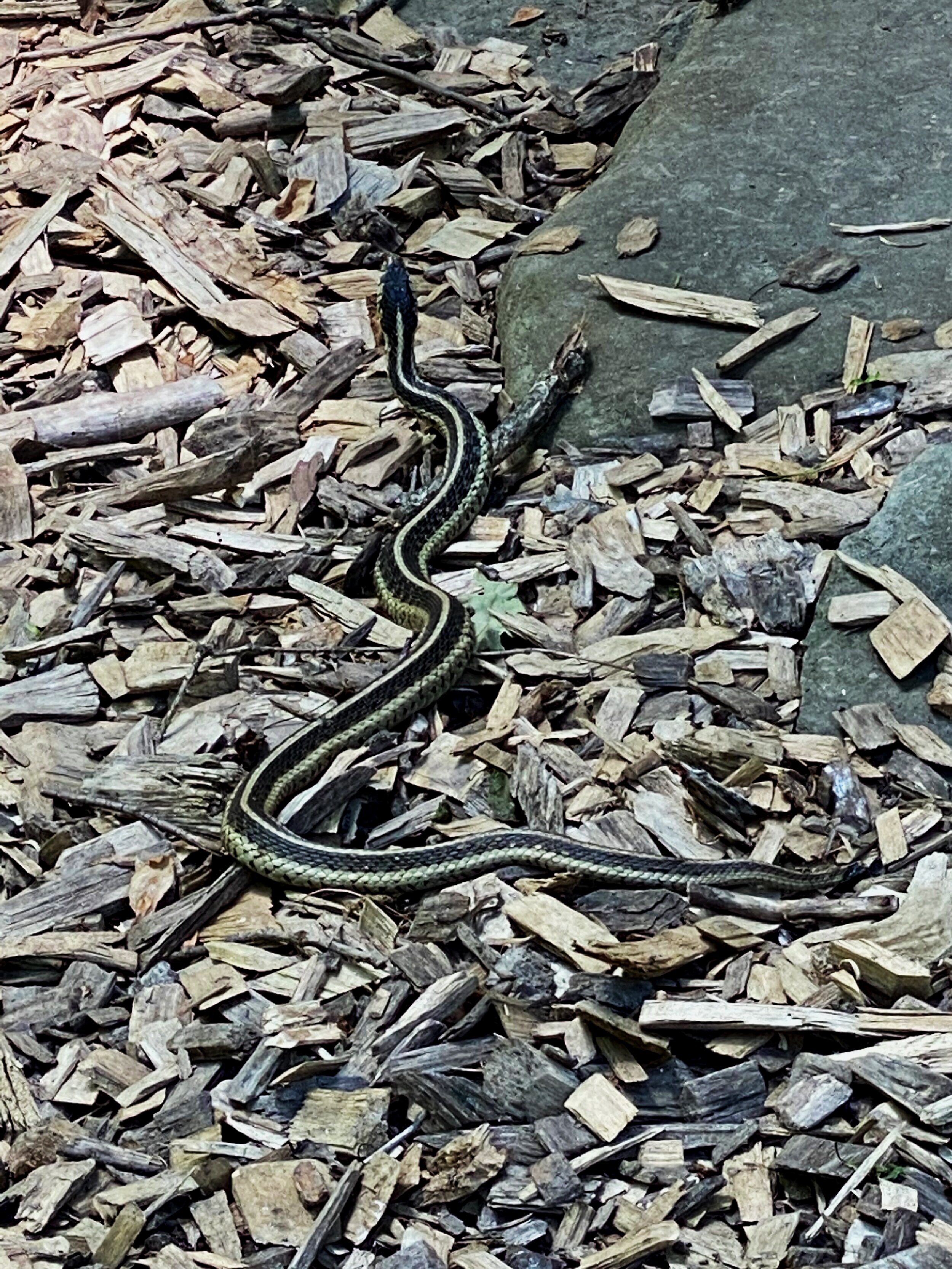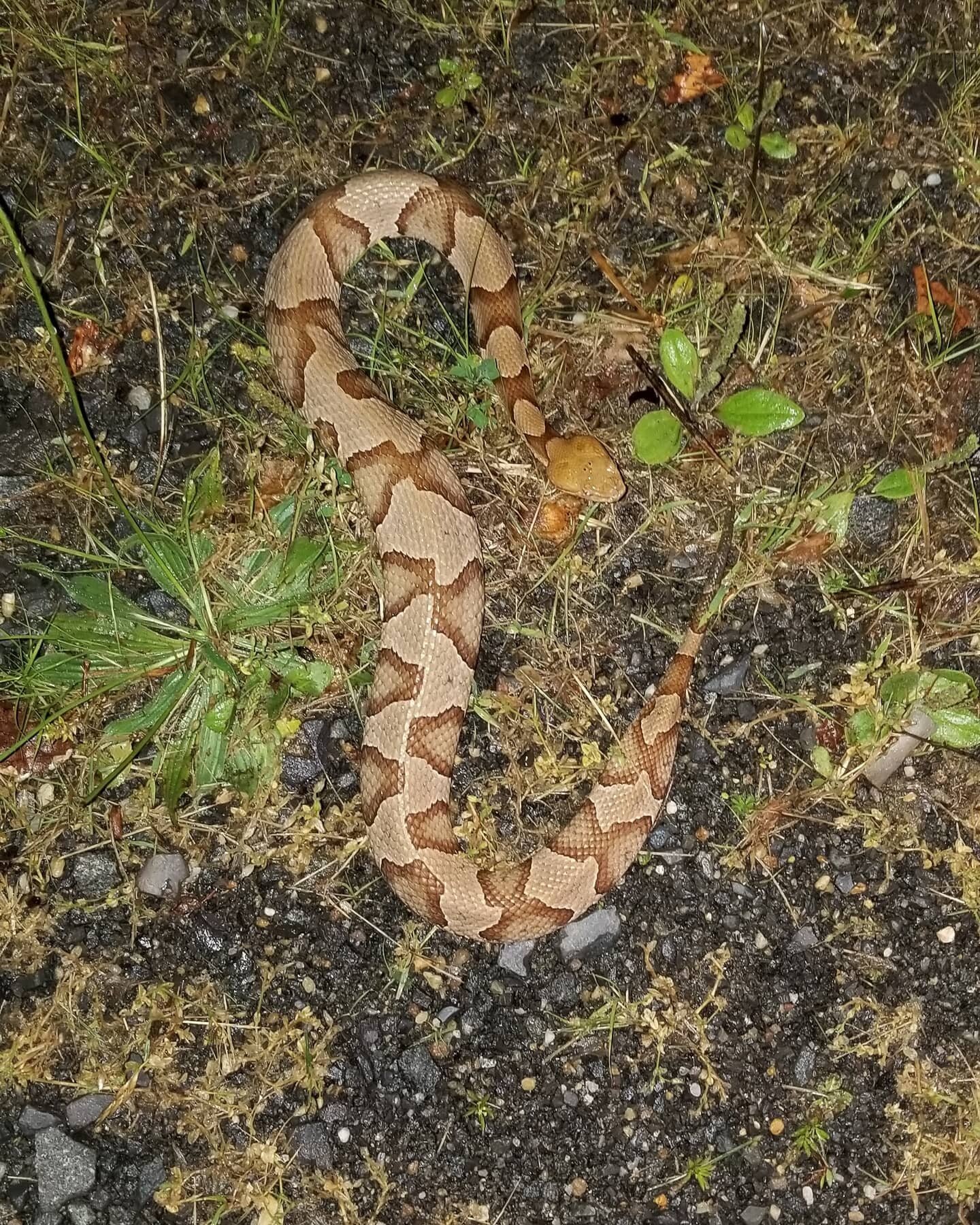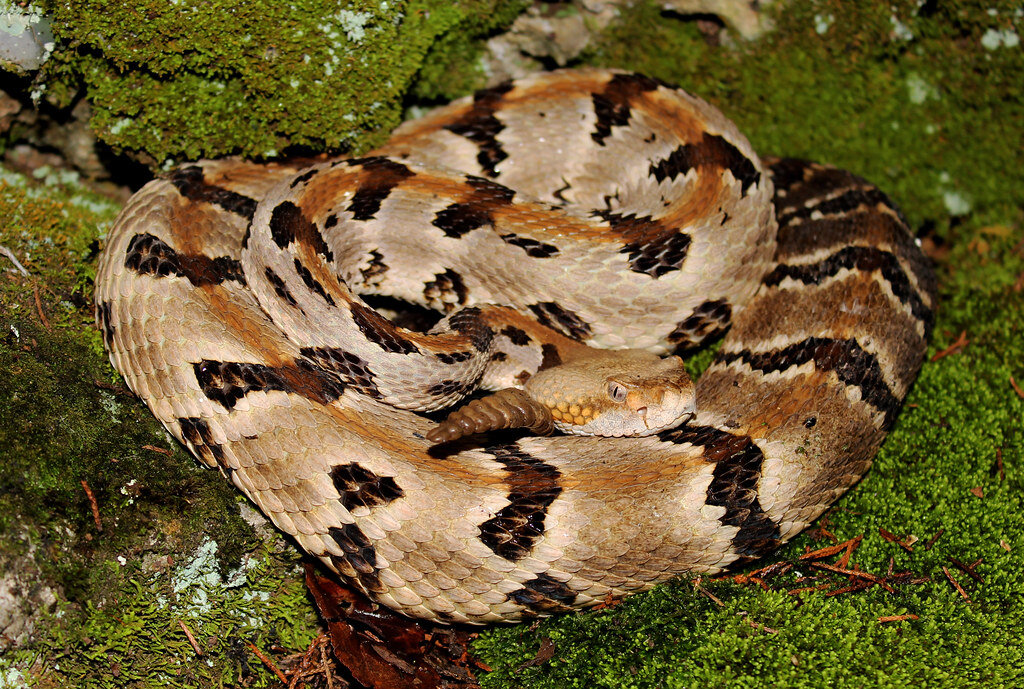Audubon at Home Sanctuary Species - Snakes
Eastern Ratsnake, Kevin Monroe
Snakes are probably the most misunderstood and underappreciated of Northern Virginia’s wildlife. Most of our 17 species of snakes are non-venomous, harmless and purely beneficial.
An extremely important part of our local food web, these beautiful, fascinating and helpful reptiles should be a welcome addition to any Audubon at Home landscape. They live in various habitats including forests, meadows and wetlands and their populations are in serious decline due to habitat destruction, lawn mowers, outdoor cats, and roads.
All of our resident snake species qualify for your Sanctuary Species. Here are 4 species you are most likely to encounter: Eastern Ratsnake, Northern Rough Greensnake, Eastern Gartersnake and Northern Ring-Necked Snake.
To learn more about ID, range, breeding, and behavior of all of our resident snakes visit the Virginia Herpetological Society website.
Eastern Ratsnake
Panterophis alleghaniensis
Eastern Ratsnakes are the most common snake seen in Virginia and may be found on the ground or in trees. They may live in a variety of habitats including agricultural areas, forests, wooded lots, and forested wetlands. These large black snakes can reach 6 foot or more. Their bodies are more squarish than round. Juveniles have a V-shaped eye/jaw stripe through the eyes and a pattern of black to dark-brown on top of a peppered black-and-white to gray body.
Their home range is around 600 meters diameter. They are often active after sunset. They eat small rodents, bird eggs, and occasionally birds. They lay 5-19 eggs in hollow trees, compost piles, decomposing logs.
Photo: Bill Crisp
Eastern Gartersnake
Thamnophis sirtalis sirtalis
Eastern Gartersnakes are identifiable by the 3 yellow stripes running the length of the body, one down the middle and one on each side. The top coloration varies from greenish, olive, brown, or black and the average length is 22 inches. They are terrestrial and can be found in habitats including forests, grasslands, marshlands, and around bodies of water.
They feed on insects, earthworms, slugs, amphibians and other small creatures found under logs and on plants. Eastern Gartersnakes give birth to live young in late summer.
Photo: Jill Spohn
Northern Rough Greensnake
Opheodrys aestivus aestivus
Adult rough greens are solid pea-green while juveniles are gray-green on top and yellowish or yellowish green (sometimes white to cream) underneath. Adults are slender and average 27 inches in length. They are capable tree climbers and will go into water to avoid predators. They lay 3-12 eggs.
Northern Rough Greensnakes feed on insects, earthworms, slugs, amphibians and other small creatures found under logs and on plants. Declining numbers of Northern Rough Greensnakes are possibly linked to herbicide and pesticides that kill prey items.
Photo: Anne Devan-Song
Northern Ring-necked Snake
Diadophis punctatus edwardsii
Northern Ring-necked snakes are small (average of 12-13 inches), thin and dark-colored except for the ring around the neck and on their bellies, ranging in color from cream to red. Sometimes the ring is absent.
Northern Ring-necked snakes feed on insects, earthworms, slugs, amphibians and other small creatures found under logs and on plants within leaf litter. They typically reside in hardwood or mixed-hardwood forests and like to have some moisture present. They lay 2-7 eggs under rocks as well as in or under logs.
Photo: Andrew Hoffman
| What Snakes Need | How Can We Help |
|---|---|
| Food and Water: Eastern Ratsnakes eat rodents and occasionally birds, while Northern Rough Greensnakes, Eastern Gartersnakes and Northern Ring-necked Snakes feed on insects, earthworms, slugs, amphibians and other small creatures found under logs and on plants.
All these non-venomous species love meadows. |
|
| Shelter: Snakes love brush, dense meadows, understory shrubs, brambles, fallen logs, standing dead trees and rock outcrops. | |
| Nesting: Black Rat, Rough Green and Ringneck snakes lay eggs, while Garter Snakes give birth to live young. All four species need rotting logs and stumps, rocks, leaf litter, brush and shrubby undergrowth as hiding places for their eggs and young. | |
| Other Threats: Glue traps kill many beneficial wildlife species, including these wonderful reptiles.
Small size plastic netting used in the garden to protect crops can ensnare snakes when left out on the ground or in your shed. Lawn mowers and weed wackers cause the death of hundreds of snakes every year and at least as many die as road kill. Harmless small or young snakes meet their ends as a cat’s chew-toy. |
Venomous Snakes: Of the many snake species found across the entire area that the ASNV Audubon at Home Program covers (Arlington & Alexandria, Fairfax, Fauquier, Loudoun, Prince William, and Rappahannock) only the Eastern Copperhead and Timber Rattlesnake are venomous. Eastern Copperheads typically live in large, upland forests, rarely venturing into people’s yards. As of this writing, Timber Rattlesnakes are found in Fauquier, Loudoun, Prince William, and Rappahannock counties.
For clues on how to tell Eastern Copperheads from similar harmless species in our area see Venomous Look-a-Likes.
Additional Resources: Virginia Herpetelogical Society and Snakes as Neighbors
Wildlife Rescue Assistance: If you find an injured or ensnared snake or want to relocate a poisonous snake away from your property you can get help through the Wildlife Rescue League or snake specialists at K2 Wildlife Encounters
Examples of Model Snake Habitat:
Alexandria City: Dora Kelley Nature Park
Arlington County: Barcroft Park — Long Branch Nature Center — Gulf Branch Nature Center
Fairfax County: Riverbend Park — Huntley Meadows Park
Fauquier County: The Clifton Institute
Loudoun County: Banshee Reeks Nature Preserve
Prince William County: Merrimac Farm Wildlife Management Area — Neabsco Regional Park — Prince William Forest — Occoquan Bay National Wildlife Refuge








